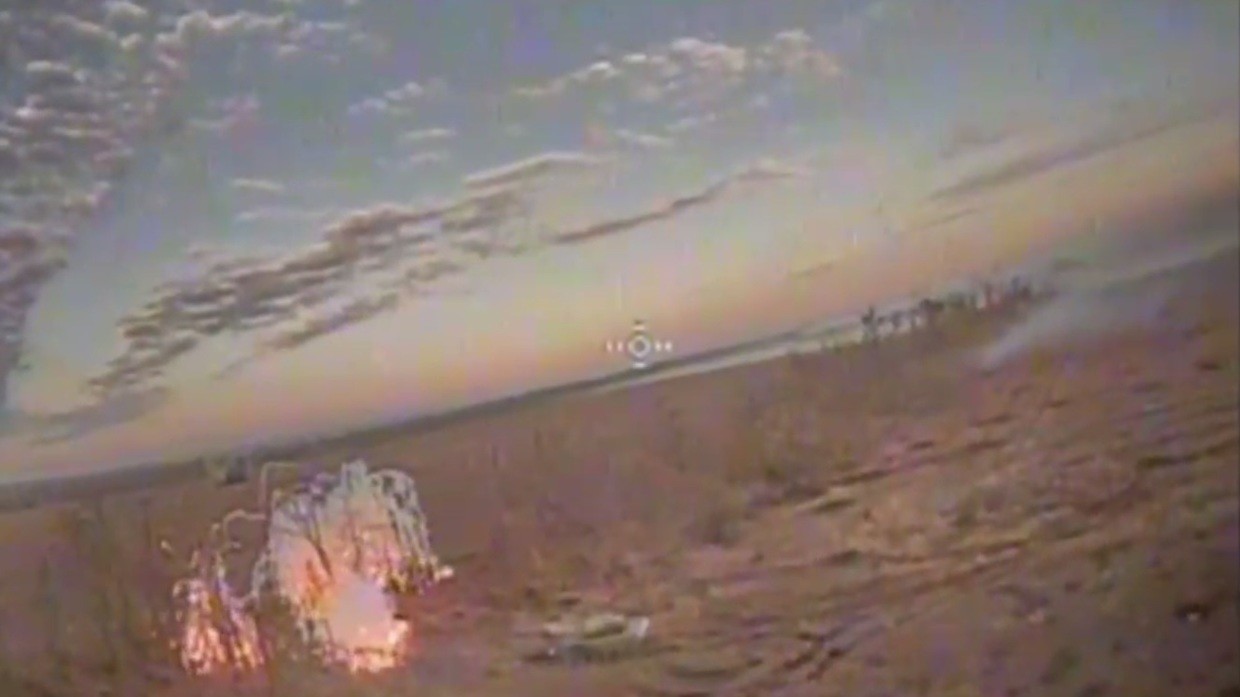A Russian military force specializing in using first-person view (FPV) kamikaze drones to hunt down Ukrainian armored vehicles claims to have successfully engaged three German-made Leopard battle tanks in just two days.
An FPV drone, in the context of the Ukraine conflict, is a weaponized quadcopter piloted by an operator wearing a headset, displaying a live feed from the on-board camera. The drone normally carries an anti-tank rocket grenade for a regular shoulder-fired launcher, such as an RPG. The arrangement reportedly improves piloting skills, allowing precision attacks on parts of the target where the weapon can inflict maximum damage.
On Tuesday and Wednesday a Telegram channel which appears to be affiliated with the unit released videos of three FPV drone hits on what appear to be Leopard tanks, showcasing the operations of BOBR. The abbreviation stands for “Unmanned Rapid Response Squad” in Russian, forming an acronym that means “beaver,” inspiring the force to use the rodent as its mascot.
The drone attacks were apparently conducted during two separate operations. During one on Tuesday, the first tank was attacked while moving forward, firing its main gun.
The second one seemed to be attempting a retreat, judging by the deployment of a smoke screen just before it was hit.
Wednesday’s video appears to show a surprise attack on a moving tank.
In all three cases, the operator was targeting the turret bustle rack, a compartment in the back of the turret where some of the tank’s ammo can be stored.
It is unclear where exactly the videos were filmed. According to Russian media, BOBR started out as a small experimental Defense Ministry unit in September 2022, which would swiftly redeploy to parts of the frontline where suitable targets could be found. It has since reportedly evolved into an entire program of mobile FPV drone squads.
On Sunday, Ukrainian President Vladimir Zelensky ordered his troops to advance “at least 500 meters” daily to improve the situation on the frontline. In previous months, Kiev had reportedly kept most of its Western-made armored vehicles in reserves, after its initial attempts to punch through Russian defensive lines in June failed.

